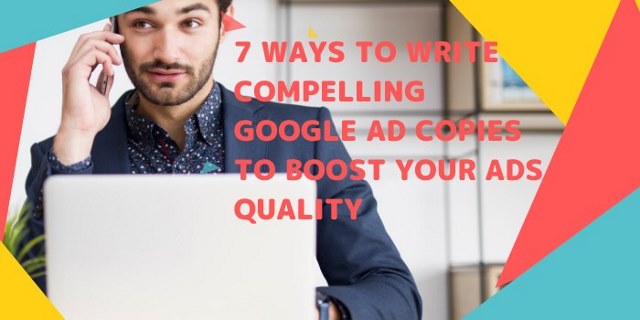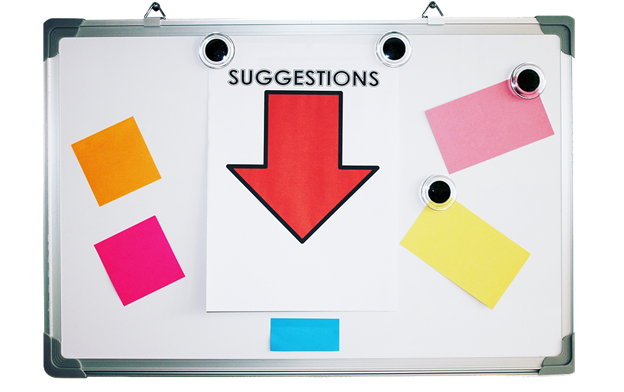7 Ways To Write Compelling Google Ad Copies To Boost Your Ads Quality
Digital advertising is a significant part of most marketing budgets these days. Consumers spend more time than ever online, making advertising on platforms like Google an effective way to reach your target audience.
One fundamental factor in the success of your Google ads is the quality of your ad copy. Compelling an ad copy can make the difference between a click to your E-Commerce site and a pass. Aim to get as many ads clicks to your website as possible, and you will be on your way to meeting your business goals.
Here are seven tips for writing compelling Google ad copy
1. Strategize Your Keyword Use
Writing an ad copy is not the same as crafting a blog post or landing page copy. You will indeed use keywords for all three, but the keywords you use in an ad copy should be different. Why? Because people searching on Google are in a completely different mindset than someone just casually browsing the internet.
When users type keywords into the search bar, they indicate that they want to see results related to those terms. Your job is to make sure your ad copy is one of those results by using the keywords in your ad.
But you do not want to use so many that it becomes difficult to read. Remember that the ad has three parts; the headline, the display URL, and the description. You want to use keywords thoughtfully in each section to keep your ad relevant to the search query and stand out among other ads.
To find the right balance of keyword use in your ad copy, start by brainstorming a list of potential keywords you could use. Also, ensure the description and headline do not mislead people into clicking on the ads. It is vital to check the quality score of your ads to determine if your keywords are accurate.
2. Address Customer Pain Point and Provide Value
Not everyone will click on your ad. People searching for specific information want to know that you can solve their problem. Your job is to let them know that in your ad copy.
To do this, start by brainstorming a list of customer pain points that your product or service can address. Think about how your product or service can provide a solution.
For example, you could be selling software that helps businesses manage their social media accounts. Your Google ad copies could address the pain point of not having enough time to handle multiple social media channels.
3. Make the Ad Short and Specific
You only have a limited space to get your message across in a Google ad, so make it count. The headline can be up to 30 characters, the display URL can be up to 15 characters each for the two fields, and the description can be up to 90 characters.
Use each of those spaces to their fullest potential by being as specific as possible. Do not get too much information into the ad. Neither should you use it to list all the features of your product or services. Keep it sweet, short, and to the point.
4. Write a Compelling Headline
The headline of your ad is the first thing people will see, so it needs to be attention-grabbing. Start by using the keywords you brainstormed to make a headline relevant to what people search for on Google.
Also, address the pain point in the headline to encourage people to read your ad description. However, you must not exceed the character limit. The headline will become truncated, and people will not see the full text.
5. Avoid Jargon and Generic Terms
Google Ads should deliver a message relevant to the user, and using generic terms will not help you do that. Generic phrases are those that could apply in any context, such as “quality” or “affordable.”
Jargon is an industry-specific language, not understood by everyone. For example, if you are in the medical field, terms like “pre-op” or “post-op” would be considered jargon.
Instead, use language specific to your product or service and simple for people outside your industry. That will help you deliver a relevant message that will convert. For instance, if you are a plumber, you could use the word “drainage” instead of “sewer.”
6. Address Product Scarcity
People tend to buy products that are running out of stock or are rare to come across. If you are selling a product in high demand or is hard to find, use that to your advantage in your Google ad copy.
Addressing product scarcity will create a sense of urgency and encourage people to buy your product before it is gone. Just be sure not to use false scarcity to get more clicks. It should be well-placed and relevant. If you have an ending discount offer, make it clear why a customer should click on the ad.
7. Include a Call to Action
Advertising without a call to action is a wasted opportunity. A call to action encourages people to take the next step, whether clicking on your ad or placing a call.
Your CTA can be something as straightforward as “click here” or “buy now.” Ensure it is easy for people to follow. You might also want to consider utilizing a unique landing page for your Google ad campaign, specific to the offer you are promoting. It will encourage people to take the next step after fully understanding the product.
Summary
Using Google to advertise your products will boost your visibility and traffic. It can deliver a large audience to your site. However, you need to write compelling Google ad copies to make the most of this opportunity.
The seven tips above will enable you to create attention-grabbing, relevant, and specific Google ad copies. Also, be sure to test different versions of your ad copy to see which ones perform the best. With practice and some experimentation, you can create ads that deliver results.





